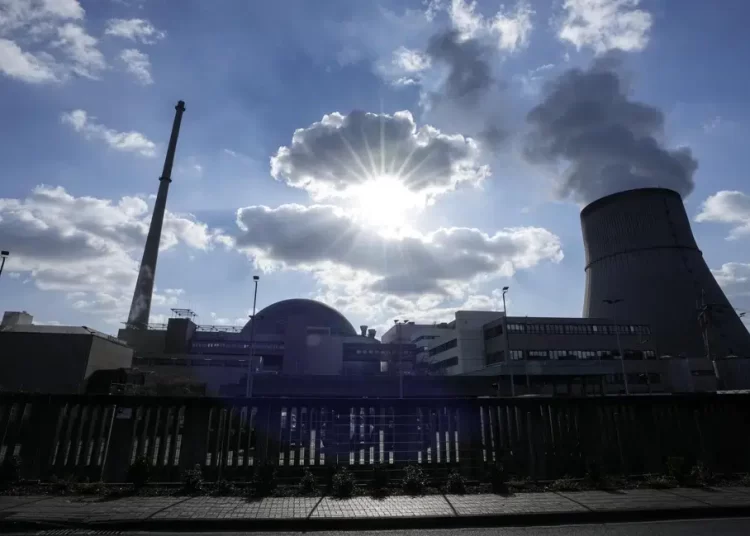Germany began winding down its three remaining nuclear power plants Saturday as part of a long-planned transition toward renewable energy.
The shutdown of the reactors Emsland, Neckarwestheim II and Isar II, agreed to more than a decade ago, was being closely watched abroad.
Other industrialised countries, such as the United States, Japan, China, France and Britain, are counting on nuclear energy to replace planet-warming fossil fuels. Germany’s decision to stop using both has met some skepticism, as well as unsuccessful calls to stop the shutdown.
Public pressure in Germany, stoked by nuclear disasters at Three Mile Island, Chernobyl and Fukushima, put pressure on successive German governments to end the use of a technology that anti-nuclear activists argue is unsafe and unsustainable.
Environmental groups planned to mark the day with celebrations outside the three reactors. Small, closed-doors ceremonies inside the plants were also organized.
Defenders of atomic energy say fossil fuels should be phased out first as part of global efforts to curb climate change, arguing that nuclear power produces far fewer greenhouse gas emissions.
As energy prices spiked last year due to the war in Ukraine, some members of German Chancellor Olaf Scholz’s government got cold feet about closing the nuclear plants as planned on Dec. 31, 2022. The government agreed to a one-time extension of the deadline, but Scholz made clear the final countdown would happen on April 15.
The government has acknowledged that in the short term, Germany will have to rely more heavily on polluting coal and natural gas to meet its energy needs, even as it takes steps to massively ramp up electricity production from solar and wind. The country aims to be carbon neutral by 2045.






Discussion about this post